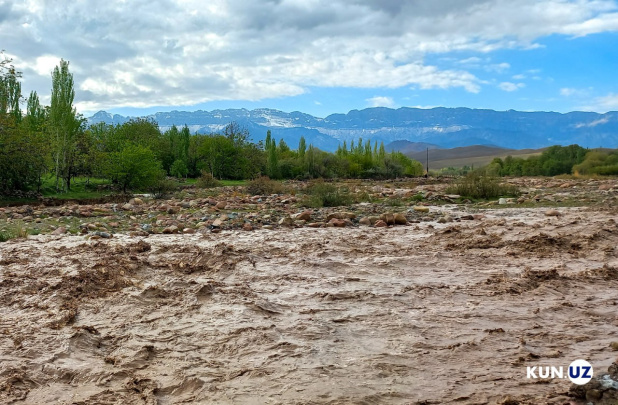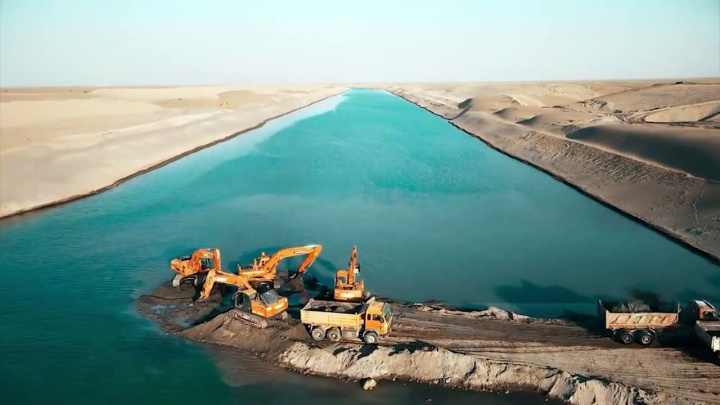Climate change in Central Asia: Impacts and solutions
Central Asia, encompassing Kazakhstan, Kyrgyzstan, Tajikistan, Turkmenistan, and Uzbekistan, is a region with diverse landscapes ranging from vast deserts to towering mountain ranges. This region is increasingly feeling the impacts of climate change, which poses significant threats to its environment, economy, and the well-being of its people. Addressing these challenges requires a multi-faceted approach that incorporates both regional cooperation and global support.

Environmental Impacts
Glacial Melt and Water Scarcity:
Central Asia's mountains, particularly the Tien Shan and Pamir ranges, are home to vital glaciers that feed into major river systems like the Amu Darya and Syr Darya. These glaciers are rapidly melting due to rising temperatures, reducing the flow of these rivers and threatening water supplies for millions. The World Bank projects that the flow of these rivers could decrease by 30% by 2050.
Desertification:
The region's arid and semi-arid areas are expanding as higher temperatures and reduced rainfall exacerbate desertification. The Aral Sea, once the fourth-largest lake in the world, has shrunk dramatically, leaving behind a salty desert and causing local climates to become more extreme.
Extreme Weather Events:
Central Asia is experiencing more frequent and severe weather events, including heatwaves, droughts, and floods. These events not only disrupt daily life but also damage infrastructure, reduce agricultural yields, and threaten food security.
Economic Impacts
Agriculture:
Agriculture, a key economic sector in Central Asia, is highly vulnerable to climate change. Reduced water availability, soil degradation, and extreme weather are already affecting crop yields and livestock productivity. The International Food Policy Research Institute estimates that without adaptation measures, agricultural productivity in the region could decline by up to 30% by 2050.
Energy:
Hydropower is a significant energy source for countries like Kyrgyzstan and Tajikistan. Melting glaciers and changing precipitation patterns are impacting water levels in reservoirs, threatening energy security. Conversely, increased temperatures are driving up the demand for electricity, further straining the energy infrastructure.
Health:
Climate change is also impacting public health. Rising temperatures and changing precipitation patterns are contributing to the spread of diseases like malaria and dengue fever. Additionally, extreme weather events and environmental degradation are leading to respiratory and cardiovascular diseases.
Social Impacts
Migration and Conflict:
Water scarcity and reduced agricultural productivity are driving rural populations to migrate to urban areas, leading to overcrowding and increased competition for resources. In some areas, these pressures are contributing to social tensions and conflicts.
Cultural Heritage:
Climate change threatens Central Asia's rich cultural heritage. Many ancient monuments and sites are at risk from desertification and extreme weather events, potentially leading to irreparable damage.
Proposed Solutions
Regional Cooperation:
Central Asian countries must strengthen regional cooperation to manage shared water resources effectively. Transboundary water management agreements, supported by robust monitoring and data-sharing mechanisms, are essential to ensure equitable and sustainable water use.
Sustainable Agriculture:
Promoting sustainable agricultural practices is crucial. This includes adopting water-efficient irrigation techniques, diversifying crops to enhance resilience, and investing in research and development to improve drought-resistant crop varieties.
Renewable Energy:
Investing in renewable energy sources, such as solar and wind, can reduce reliance on vulnerable hydropower and fossil fuels. Central Asia has significant potential for renewable energy, and harnessing this potential can help mitigate the impacts of climate change while promoting energy security.
Disaster Risk Reduction:
Enhancing disaster risk reduction strategies is essential. This involves improving early warning systems, investing in resilient infrastructure, and implementing community-based disaster preparedness programs.
International Support:
Central Asia requires international support to address climate change effectively. This includes financial assistance, technology transfer, and capacity-building initiatives. Global climate funds, such as the Green Climate Fund, can play a pivotal role in supporting adaptation and mitigation efforts in the region.
Public Awareness and Education:
Raising public awareness about the impacts of climate change and the importance of sustainable practices is vital. Educational programs and campaigns can empower communities to take proactive steps in mitigating and adapting to climate change.
Conclusion
Climate change poses a formidable challenge to Central Asia, threatening its environment, economy, and social stability. However, with concerted efforts at the local, regional, and global levels, it is possible to mitigate these impacts and build a more resilient future. Central Asia's unique landscapes and rich cultural heritage depend on the urgent and sustained action of its people and the international community to combat the threats posed by a changing climate.
Doniyor Tukhsinov
Related News

18:30 / 08.11.2024
Uzbekistan to raise property and water taxes in 2025

11:19 / 08.11.2024
Uzbekistan to build 10 reservoirs to boost irrigation on 50,000 hectares

17:14 / 06.11.2024
Poll: Central Asia shows mixed reactions to COP29 and climate change concerns

15:47 / 04.11.2024



